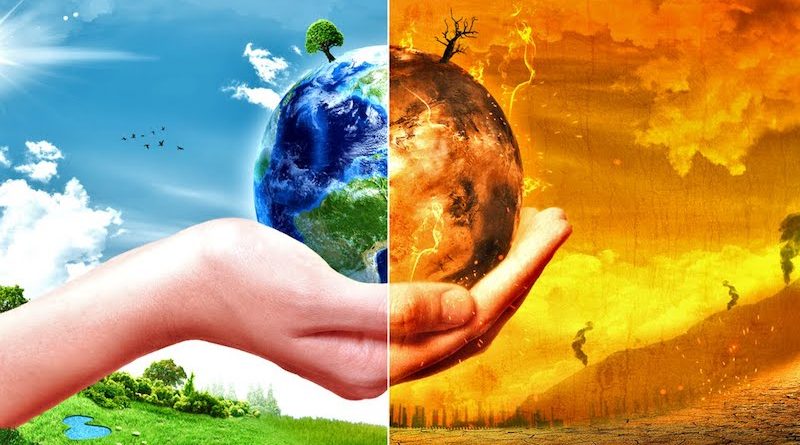Some 400,000 years ago, Greenland was, well, green, scientists say. According to a new study released Thursday, the massive island was an ice-free tundra landscape – perhaps covered by trees.
So why does this matter to us today?
Because it tells us “Greenland’s ice sheet is fragile,” study co-lead author Paul Bierman of the University of Vermont told USA TODAY. “All by itself, during a warm period very similar to today, the ice sheet melted away 400,000 years ago. That was without fossil fuel emissions into the atmosphere. That was with carbon dioxide levels about what they were during the Civil War.”
Worryingly for us today, Greenland’s melted ice 400,000 years ago caused at least 5 feet of sea-level rise around the globe, despite atmospheric levels of heat-trapping carbon dioxide being far lower than they are today (280 parts per million vs. 420 ppm today). If it happened today, 5 feet of sea-level rise would put coastal cities worldwide partially or totally underwater.
This means that the ice sheet on Greenland may be more sensitive to human-caused climate change than previously thought – and will be vulnerable to irreversible, rapid melting in the coming centuries.
“We are coming perilously close to some potentially critical climate tipping points,” said University of Pennsylvania meteorologist Michael Mann, who was not part of the study but reviewed it for USA TODAY.
‘Bulletproof evidence’ of Greenland ice sheet melt
This study is “really the first bulletproof evidence that much of the Greenland ice sheet vanished when it got warm,” Bierman said in a statement.
How can he make this claim? Bierman and his team analyzed sediments from a long-lost ice core, collected at a secret U.S. Army base in the 1960s, to make the discovery.
A Cold War mission
During the Cold War, a secret U.S. Army mission was located at Camp Century in northwestern Greenland. To the public, its mission was scientific tasks such as drilling for ice cores. (But it also doubled as a top-secret site for testing nuclear missiles during the height of the Cold War.)
In the 1960s, scientists at Camp Century drilled down through 4,560 feet of ice on Greenland – and then kept drilling to pull out a 12-foot-long tube of soil and rock from below the ice. Then this icy sediment was lost in a freezer for decades.
It was accidentally rediscovered in 2017 and shown to hold not just sediment but also leaves and moss, remnants of an ice-free landscape, perhaps a boreal forest.
“Greenland’s past, preserved in 12 feet of frozen soil, suggests a warm, wet, and largely ice-free future for planet Earth,” said Bierman, “unless we can dramatically lower the concentration of carbon dioxide in the atmosphere.”
Not an instantaneous melt
Fortunately, the melting process is not instantaneous, he told USA TODAY, “so it gives us a little time, not a lot.”It’s going to take hundreds to thousands of years to greatly diminish the ice sheet, Bierman said, but this shouldn’t be a source of comfort to us, he cautioned. As the ice sheet melts and shrinks, it reduces the amount of reflective ice that bounces sunlight back into space. Instead, the sun’s light is absorbed into the bare ground, creating a warming feedback loop.
Bierman said the study, which was published Thursday in the journal Science, “is a real warning sign to us that we’re going to lose large parts of the ice sheet unless we decarbonize.”
More work needed
Mann cautioned that the cause of the ice melt 400,000 years ago (changes in the patterns of seasonal solar heating due to the shape of the Earth’s orbit around the sun) is very different from the cause today (human-caused greenhouse warming). “So it will take some additional work to determine the precise implications it has for today,” Mann said.
Sea level rises dramatically
The melting of Greenland’s ice has serious implications for global sea level rise, the study reports. “If we melt just portions of the Greenland ice sheet, the sea level rises dramatically,” said scientist and study co-author Tammy Rittenour from Utah State University. “Forward modeling the rates of melt, and the response to high carbon dioxide, we are looking at meters of sea level rise, probably tens of meters. And then look at the elevation of New York City, Boston, Miami, Amsterdam. Look at India and Africa – most global population centers are near sea level.”
Bierman said, “400,000 years ago there were no cities on the coast … and now there are cities on the coast.”

